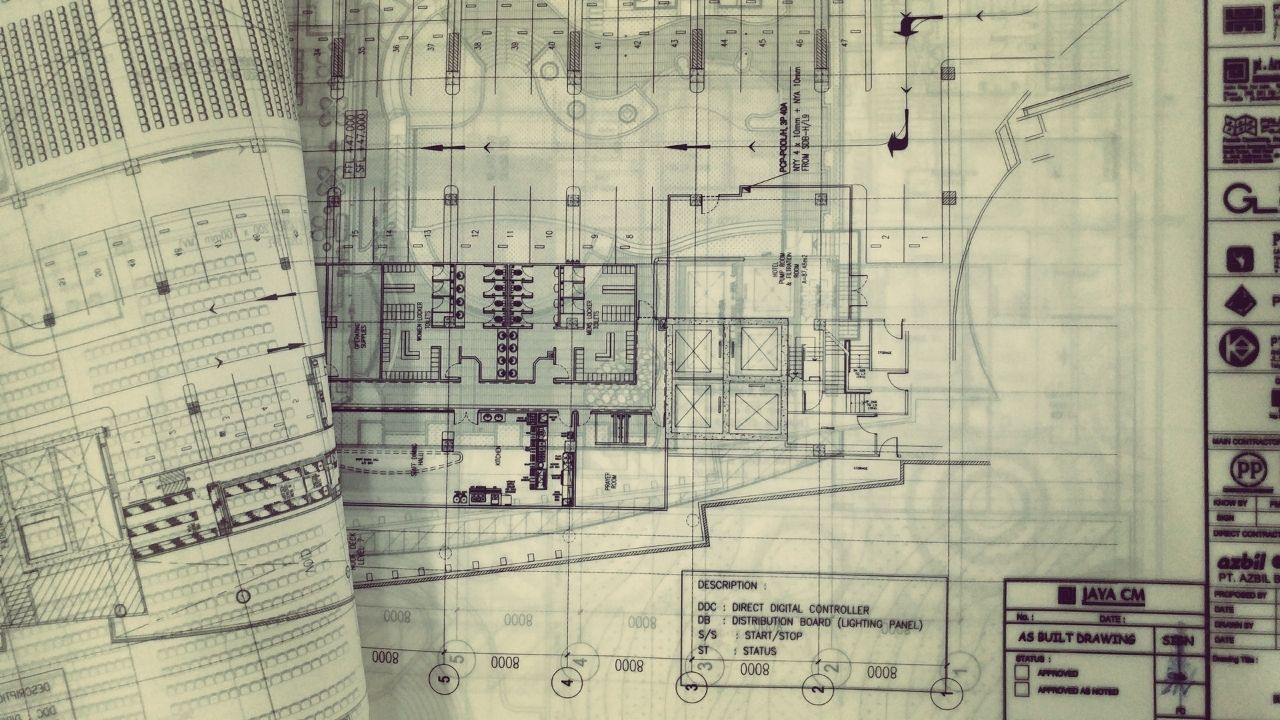Do you want to impress potential clients with your web design proposals? Look no further. This article will provide you with essential tips and strategies to create winning proposals that will leave a lasting impression. Understand the client's needs, showcase your portfolio, and present a compelling design concept. Learn how to outline clear project scopes, establish a realistic timeline, and structure your pricing and payment.
Effective communication and follow-up will seal the deal. Let's dive in!
 By showcasing your previous projects, you demonstrate your skills in responsive design and ability to create a seamless user experience. Your portfolio should highlight the websites you have designed, emphasizing their mobile-friendly layouts and intuitive navigation. Include screenshots or links to live websites, allowing potential clients to experience the websites firsthand.
Additionally, provide brief descriptions of each project, outlining the challenges you faced and the innovative solutions you implemented. By presenting a diverse range of successful projects, you establish yourself as a reliable and talented web designer, increasing your chances of winning over potential clients.
By showcasing your previous projects, you demonstrate your skills in responsive design and ability to create a seamless user experience. Your portfolio should highlight the websites you have designed, emphasizing their mobile-friendly layouts and intuitive navigation. Include screenshots or links to live websites, allowing potential clients to experience the websites firsthand.
Additionally, provide brief descriptions of each project, outlining the challenges you faced and the innovative solutions you implemented. By presenting a diverse range of successful projects, you establish yourself as a reliable and talented web designer, increasing your chances of winning over potential clients.

 Start by determining your pricing strategy. Consider factors such as the complexity of the project, the amount of time and resources required, and the competitive market rates. It's essential to strike a balance between offering a fair price that reflects the value of your services and remaining competitive in the industry.
Once you have established your pricing strategy, clearly communicate it to the client. Provide a detailed breakdown of the costs involved, including any additional fees or expenses. This transparency will help build trust and ensure that both parties are on the same page regarding the financial aspects of the project.
Additionally, clearly outline the payment terms. Specify the amount due upfront, any milestones or progress payments, and the final payment upon completion. Be clear about the payment methods accepted and any late payment penalties or discounts for early payment.
Start by determining your pricing strategy. Consider factors such as the complexity of the project, the amount of time and resources required, and the competitive market rates. It's essential to strike a balance between offering a fair price that reflects the value of your services and remaining competitive in the industry.
Once you have established your pricing strategy, clearly communicate it to the client. Provide a detailed breakdown of the costs involved, including any additional fees or expenses. This transparency will help build trust and ensure that both parties are on the same page regarding the financial aspects of the project.
Additionally, clearly outline the payment terms. Specify the amount due upfront, any milestones or progress payments, and the final payment upon completion. Be clear about the payment methods accepted and any late payment penalties or discounts for early payment.


Key Takeaways
- Understand the target audience and gather client feedback to tailor the proposal accordingly
- Showcase impressive past work, client testimonials, and emphasize relevant experience and excellent communication skills
- Use design inspiration, visual storytelling, and strategic placement of visuals and color to create a compelling design concept
- Define project scope and timeline, involve the client, and communicate deliverables and pricing/payment structure clearly
Understanding the Client's Needs
To impress potential clients, it is important to understand their needs and what they are looking for in a web design proposal. One important aspect of understanding their needs is identifying their target audience. You must determine who their website is intended for, as this will greatly influence the design and functionality of the site. By identifying their target audience, you can tailor the proposal to meet their specific needs and expectations. Another crucial step in understanding the client's needs is gathering client feedback. This involves actively listening to their ideas and requirements, and incorporating them into the web design proposal. By gathering client feedback, you show them that you value their input and are committed to creating a website that aligns with their vision. During the initial consultation, ask questions to gain a deeper understanding of their business, industry, and goals. This will help you create a proposal that addresses their unique challenges and sets them apart from competitors. Additionally, encourage clients to provide feedback throughout the design process, as this will ensure that the final product meets their expectations.Presenting Your Portfolio and Credentials
When presenting your portfolio and credentials, it's essential to showcase your impressive past work to potential clients. Highlighting your relevant experience will demonstrate your expertise in the field and give clients confidence in your abilities. Additionally, including client testimonials will provide social proof and reinforce the quality of your work.Showcase Impressive Past Work
Show potential clients your impressive past work by including a portfolio section in your web design proposals. This is a crucial step in convincing clients of your expertise and capabilities. By showcasing your previous projects, you demonstrate your skills in responsive design and ability to create a seamless user experience. Your portfolio should highlight the websites you have designed, emphasizing their mobile-friendly layouts and intuitive navigation. Include screenshots or links to live websites, allowing potential clients to experience the websites firsthand.
Additionally, provide brief descriptions of each project, outlining the challenges you faced and the innovative solutions you implemented. By presenting a diverse range of successful projects, you establish yourself as a reliable and talented web designer, increasing your chances of winning over potential clients.
By showcasing your previous projects, you demonstrate your skills in responsive design and ability to create a seamless user experience. Your portfolio should highlight the websites you have designed, emphasizing their mobile-friendly layouts and intuitive navigation. Include screenshots or links to live websites, allowing potential clients to experience the websites firsthand.
Additionally, provide brief descriptions of each project, outlining the challenges you faced and the innovative solutions you implemented. By presenting a diverse range of successful projects, you establish yourself as a reliable and talented web designer, increasing your chances of winning over potential clients.
Highlight Relevant Experience
Highlighting relevant experience is essential for convincing potential clients of your expertise and capabilities. When it comes to web design proposals, effectively communicating your experience in client communication and design expertise is key. Start by showcasing your previous projects that demonstrate your ability to understand and meet client requirements. Highlight any successful collaborations with clients, emphasizing your excellent communication skills and ability to deliver on their vision. Additionally, mention any specific design expertise you have, such as UI/UX design, responsive design, or branding. This will show potential clients that you have the necessary skills and knowledge to create a visually appealing and functional website.Include Client Testimonials
To make your web design proposals more convincing, include client testimonials that showcase your ability to deliver exceptional results and meet their specific needs. Client testimonials serve as proof of your expertise and reliability, providing potential clients with social proof of your abilities. When clients see positive feedback from previous clients, it instills confidence in your work and increases the likelihood of them choosing you for their project. Testimonials also highlight client satisfaction, demonstrating that you have a track record of meeting and exceeding client expectations. Including specific details about how you addressed their unique needs and challenges further strengthens your proposals. Clients want to see real-life examples of your work and how it has benefited others. By incorporating client testimonials into your web design proposals, you can build trust and differentiate yourself from competitors.
Creating a Compelling Design Concept
Creating a compelling design concept involves captivating you, the potential client, with a unique and visually striking vision for your website. Design inspiration plays a crucial role in this process, as it helps to shape the overall look and feel of your website. By drawing upon various sources of inspiration, such as nature, art, and current design trends, designers can create a concept that is both visually appealing and in line with your brand identity. Visual storytelling is another important aspect of a compelling design concept. It involves using images, graphics, and typography to communicate your brand's message and engage your audience. Through the strategic placement of visuals and the use of color, designers can create a narrative that not only captures attention but also leaves a lasting impression. To create a truly captivating design concept, designers must understand your brand, your target audience, and your goals. By incorporating design inspiration and visual storytelling into the concept, they can create a unique and memorable website that effectively communicates your message and drives engagement.Outlining a Clear Project Scope and Timeline
Understanding the project scope and timeline is crucial for effectively managing the design process and meeting project deadlines. When starting a new project, it's important to define the deliverables and have a clear understanding of what needs to be achieved. By clearly defining the goals and objectives, you can set realistic expectations for the project and ensure that everyone is on the same page. Estimating the project timeline is another important aspect of outlining the project scope. By breaking down the project into smaller tasks and estimating the time required for each task, you can create a timeline that allows for efficient project management. This will help you allocate resources effectively and ensure that the project stays on track. It's also important to communicate the project scope and timeline to the client. This will help manage their expectations and ensure that they understand what will be delivered and when. By involving the client in the process of defining the deliverables and estimating the project timeline, you can ensure that everyone is aligned and working towards the same goals.Pricing and Payment Structure
The pricing and payment structure for the project should be clearly outlined and communicated to the client. When it comes to impressing potential clients, having a well-defined pricing strategy and clear payment terms is crucial. Start by determining your pricing strategy. Consider factors such as the complexity of the project, the amount of time and resources required, and the competitive market rates. It's essential to strike a balance between offering a fair price that reflects the value of your services and remaining competitive in the industry.
Once you have established your pricing strategy, clearly communicate it to the client. Provide a detailed breakdown of the costs involved, including any additional fees or expenses. This transparency will help build trust and ensure that both parties are on the same page regarding the financial aspects of the project.
Additionally, clearly outline the payment terms. Specify the amount due upfront, any milestones or progress payments, and the final payment upon completion. Be clear about the payment methods accepted and any late payment penalties or discounts for early payment.
Start by determining your pricing strategy. Consider factors such as the complexity of the project, the amount of time and resources required, and the competitive market rates. It's essential to strike a balance between offering a fair price that reflects the value of your services and remaining competitive in the industry.
Once you have established your pricing strategy, clearly communicate it to the client. Provide a detailed breakdown of the costs involved, including any additional fees or expenses. This transparency will help build trust and ensure that both parties are on the same page regarding the financial aspects of the project.
Additionally, clearly outline the payment terms. Specify the amount due upfront, any milestones or progress payments, and the final payment upon completion. Be clear about the payment methods accepted and any late payment penalties or discounts for early payment.
Effective Communication and Follow-Up
Make sure to maintain effective communication and follow-up with your clients to ensure a smooth and successful project. Building rapport with your clients is crucial in establishing a strong foundation for your working relationship. Take the time to get to know them, understand their goals, and show genuine interest in their business. This will not only help you understand their needs better but also create a sense of trust and confidence in your abilities. Setting expectations is another important aspect of effective communication. Clearly define the scope of the project, timelines, and deliverables right from the start. This will help manage your client's expectations and avoid any misunderstandings or disappointments down the line. Regularly communicate with your clients to provide updates on the progress of the project and address any concerns or questions they may have. By keeping them informed and involved, you will build trust and keep them engaged in the project. Follow-up is essential in ensuring that your clients are satisfied with the work you have done. After completing a project, reach out to the client to gather feedback and address any remaining issues. This shows that you value their input and are committed to providing them with the best possible service. Maintaining effective communication and following up with your clients will not only lead to a successful project but also strengthen your professional reputation and increase the likelihood of future collaborations.Frequently Asked Questions
How Do I Determine the Right Pricing for My Web Design Services?
To determine the right pricing for your web design services, consider using value-based pricing strategies. By focusing on the unique value you provide to clients, you can set a price that reflects the quality and expertise you offer.
What Are Some Effective Strategies for Managing Client Expectations Throughout the Design Process?
To effectively manage client satisfaction during the design process, use effective communication strategies. Keep clients informed of progress, set clear expectations, and address any concerns promptly. This will ensure a successful collaboration and a satisfied client.How Can I Ensure That My Web Design Proposal Stands Out From My Competitors?
To ensure your web design proposal stands out from competitors, focus on your differentiating factor or unique selling proposition. Highlight what sets you apart and why potential clients should choose you.Are There Any Industry-Standard Contracts or Agreements That Should Be Included in a Web Design Proposal?
To impress potential clients with your web design proposal, it's essential to include industry-standard contracts and essential agreements. These documents provide clarity and protection for both parties involved in the project.How Do I Handle Revisions and Changes Requested by the Client During the Design Process?
To handle revisions and changes requested by the client during the design process, you need to effectively handle client feedback and communicate design changes. This ensures a collaborative and successful web design project.Conclusion
In conclusion, impressing potential clients with your web design proposals requires understanding their needs, showcasing your portfolio and credentials, and creating a compelling design concept. It also involves outlining a clear project scope and timeline, determining a fair pricing and payment structure, and maintaining effective communication and follow-up. By implementing these tips, you can confidently present your proposals and increase your chances of winning clients. Remember to always keep the client's needs at the forefront and demonstrate your expertise and professionalism throughout the process. Good luck!

